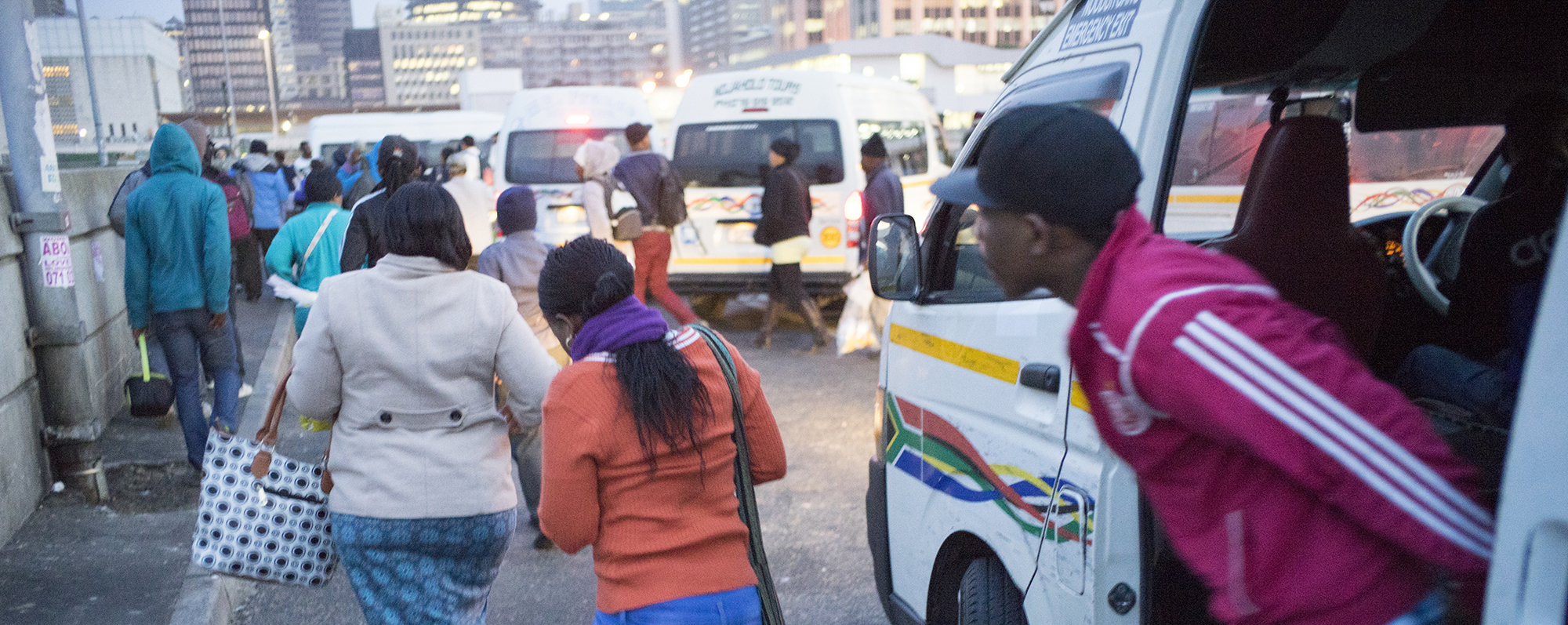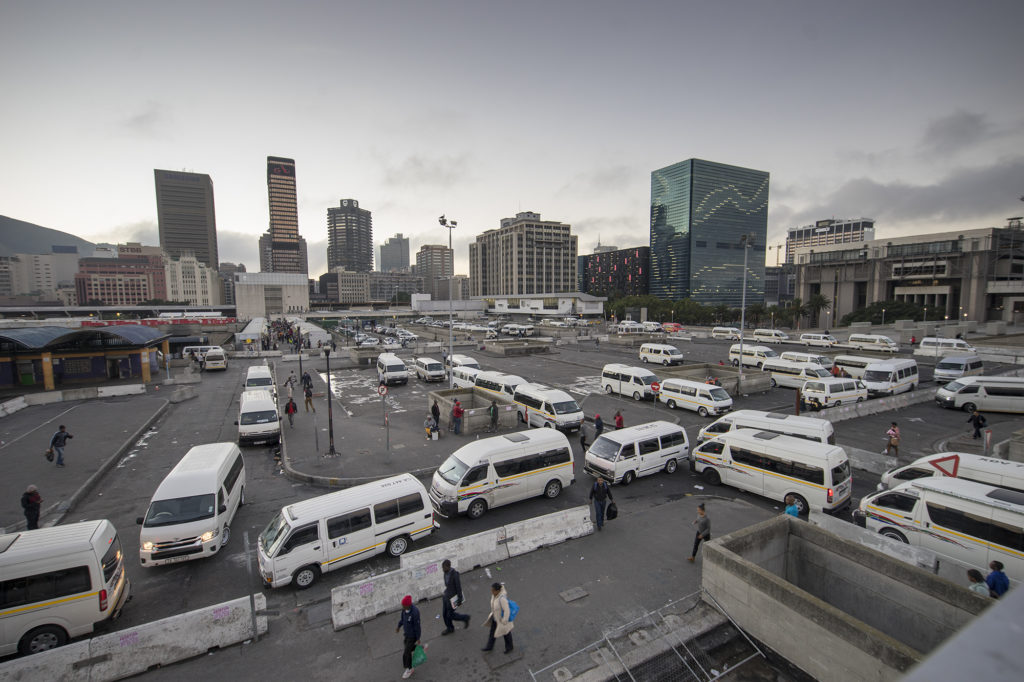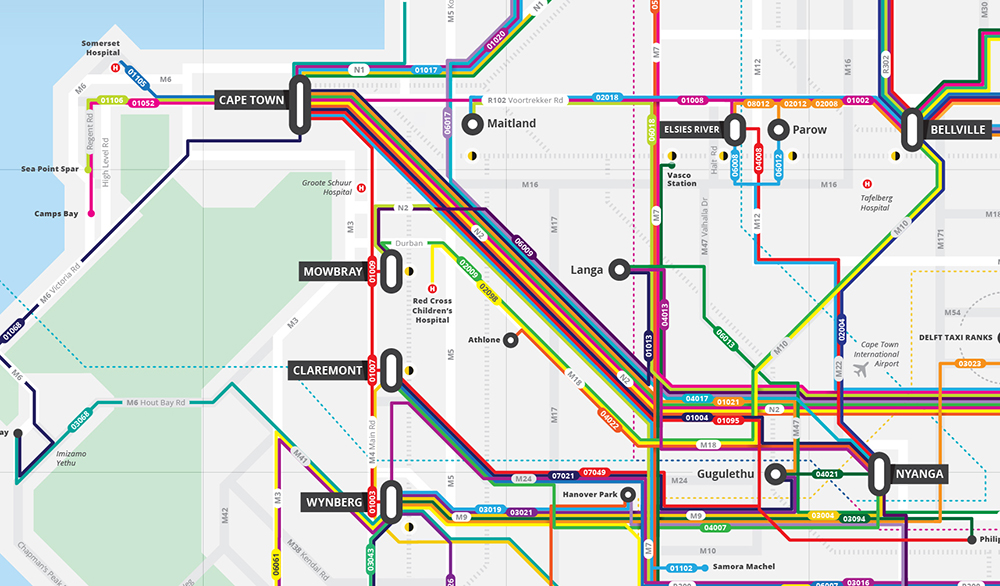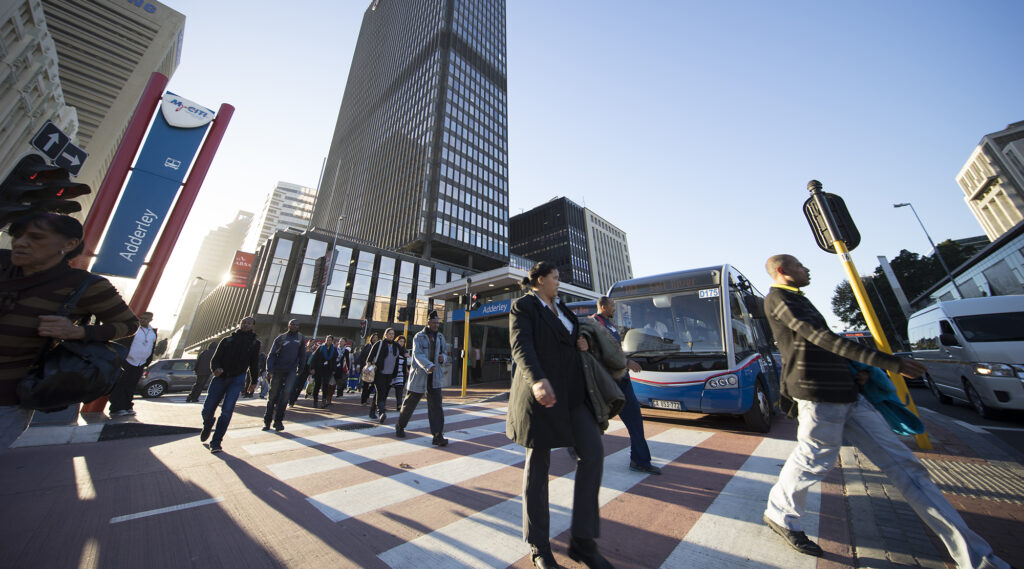
To Cope with Growth, African Cities Need to Digitise and Integrate Transport Services
May 11, 2017 — Blog
Cities are urbanising more rapidly than they can plan for, and with increasing inequality. Seventy one African cities have populations greater than 750,000 people, but lack the infrastructure to support their citizens. By 2050, more than 1.1 billion Africans will be living in cities, putting additional pressure on already strained infrastructure systems.
Public transport is critical to building an inclusive city and connecting people with opportunities, not to mention its role in allowing the city to function. In fact, African cities have an abundance of public transport services; what they lack is integration and information to help these services scale for the next billion people.

African cities have an abundance of public transport services; what they lack is integration and information to help these services scale for the next billion people.
Digitalised transport information is relatively new in African cities, and where it does exist, it only captures a small piece of the public transport ecosystem: the formal operations. While cities and formal bus or train operators may have information on their services, informally run transport, which accounts for up to 90% of the public transport trips in some African cities, usually relies on word of mouth to communicate its services. Data collection efforts are underway from Cairo to Cape Town to form a better understanding of where these services operate and how they contribute to the larger mobility network.

After these initial collection projects, it is critical to build a system that maintains and augments the data to make it useful. Integrating the collected data with information on the formal services makes it possible, often for the first time, to have the full picture of the public transport ecosystem. Transport data that is integrated and maintained is key to creating the systems Africa’s cities need to cope with their looming growth.
A digital platform can connect these systems to provide an accurate, comprehensive view of a network. Moreover, it can be responsive, receiving diverse inputs and updating data to create reliable, and valuable information. Power that platform with algorithms and machine learning capacity, and make it open to everyone, and you can enable developers, cities, and advocates to bring that data to passengers and others who need it.
Power that platform with algorithms and machine learning capacity, and make it open to everyone, and you can enable developers, cities, and advocates to bring data to passengers and others who need it.
A few such platforms are provided by major Western transport departments, such as London’s TfL. Through platforms, cities can make system information openly available to facilitate and intensify a broad range of tools and other solutions. The absence of these platforms in African cities has limited how city leaders, transport operators, and citizens understand, address and experience their local mobility systems. In response to this critical gap, WhereIsMyTransport launched our own open platform for integrated public transport information in August last year to provide this essential piece of technology in emerging cities.
To support the cities we operate in, such as Johannesburg and Cape Town, we unify data on both formal and informally run systems, the latter of which we collect ourselves. We make all of this openly available on our platform to give emerging cities the same capacity as cities like London to make informed-decisions and interventions.
When centralised in one open, intelligent platform, digital information revolutionises how mobility solutions can be approached in African cities. Just as no city is the same, no challenge is the same. Urban challenges are highly spatio-temporal, and need to embrace the local existing systems that exist in place. Digital tools that work with the reality on the ground can make much-needed, context-specific interventions possible.
Across many cities, informally run transport is increasingly recognised as an enabler of sustainable urban mobility. Harnessing the potential of this mode to best serve residents is a near-impossible feat without full knowledge of the system. Emerging cities, like Johannesburg or Dar es Salaam, aim to integrate informally run systems with new formal services such as bus rapid transport. City transport departments could seek to use informally run transport as feeder systems to core urban areas where scheduled, high capacity systems are more financially viable. A platform-based approach gives these cities access to the crucial information to plan for and manage an integrated network.

Digitalised and integrated transport information is an unprecedented opportunity for cities and service providers to rethink the future of mobility in Africa. It offers a way of planning for and accommodating the rapidly urbanising emerging city which houses both formal and informally run systems as well as diverse social, environmental and economic geographies. A platform-based approach simplifies these complex systems, providing the information needed to empower the growing continent to build the solutions its complex challenges demand and its many opportunities present.
 Meet the 2017 Class of Global Urban Innovators
Meet the 2017 Class of Global Urban Innovators